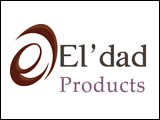Do you avoid wearing shorts due to the unsightly veins on your legs? Varicose veins are enlarged veins commonly found in the legs. The veins often appear dark purple or blue and twisted and bulging above the skin’s surface. Leg veins have the toughest job. The force of transporting blood from the bottom of the body uphill to the heart and lungs makes the legs a prime location for varicose veins. Hormonal changes that occur during puberty, pregnancy and menopause, as well as taking birth control pills or HRT also increase the risk of varicose veins. Too much standing, obesity and constipation can make vein problems worse.
Thankfully nature provides us with several herbal extracts including diosmin, horse chestnut, Butcher’s broom and hesperidin, that can improve the look of your veins, treat swollen legs and ankles, hemorrhoids, varicose veins, chronic venous insufficiency and spider veins.
Citrus Rinds to the Rescue
Diosmin, made from extracting hesperidin from citrus rinds and then converting it, is used to treat chronic venous insufficiency (CVI), hemorrhoids, lymphedema, and varicose veins. It is a powerful anti-inflammatory and free radical scavenging agent. Diosmin has been used for more than 3 decades as a vein tonic and vein-protective agent and to improve wound healing. It is now being researched for the treatment of premenstrual syndrome, colitis, and diabetes.
Hesperidin is the main flavonoid in lemons and oranges. In combination with diosmin, hesperidin is a common treatment used in Europe for the treatment of venous insufficiency and hemorrhoids. Hesperidin reduces the permeability of the capillaries and is an anti-inflammatory agent. In combination with diosmin, hesperidin has significantly improved acute internal hemorrhoids of pregnancy in a clinical trial.
Chronic venous insufficiency (CVI) is characterized by pain, leg heaviness, a sensation of swelling and cramps, and is often seen in those with varicose veins. A multicenter international trial involving 5,052 people with CVI evaluated diosmin. Patients were treated with 450 mg of diosmin and 50 mg of hesperidin daily for six months. Continuous clinical improvement was found throughout the study, as well as improvements in the participants’ quality of life scores. Diosmin has also been found effective in treating severe stages of CVI, including venous ulceration and delayed healing.
Horse Chestnut Extract
Horse chestnut extract is used for the treatment of symptoms of venous insufficiency including pain and heaviness in the legs, night-time cramps in the calves, and itchy, swollen legs; along with phlebitis and varicose veins. It is also effective for hemorrhoids, skin inflammation and premenstrual syndrome. Aescin, the active ingredient in horse chestnut, tones the and strengthens the walls of veins, improving the flow of blood back to the heart. It appears to work by halting the release of enzymes that damage capillary walls as well as reducing inflammation that irritates capillaries.
Horse chestnut extract also relieves swelling. Several controlled studies have shown that horse chestnut improves circulation while reducing varicose veins and chronic venous insufficiency and was found to be as effective as wearing compression stockings.
Butcher’s Broom
Butcher’s Broom has been shown in several clinical trials to reduce varicose veins and hemorrhoids, and to treat the itching and burning of hemorrhoids. It is also used to help treat lower leg discomfort, including cramps, pain, itching and swelling caused by pooling of blood in the veins.
A review of pharmacological studies indicated that butcher’s broom extract exerts activity on the three levels of circulation involved in CVI. It acts on lymphatic drainage, the constriction of blood vessels and microcirculation. When used in combination with the other herbs like Horse chestnut extract, it also improves the strength of veins and reduces permeability. Butcher’s broom has been found to reduce blood pooling in the lower leg and also the size of the ankle and lower leg. Butcher’s broom also reduces enlarged veins. A German study over 12 weeks, involving 166 female patients with chronic venous insufficiency found significant improvement in swelling, circulation and pain. Another study involving 124 patients, over an 8 week period, found that leg heaviness, edema, cramps and pain associated with venous insufficiency were reduced by 2 weeks and for the majority of participants symptoms were eliminated by the end of the study.
No longer will you have to wear those constricting support hose and hide your legs under clothing. You can have beautiful legs in as little as ninety days.
Lorna R. Vanderhaeghe is a women’s natural health expert and author of 13 books including Beautiful Skin Begins Within.



